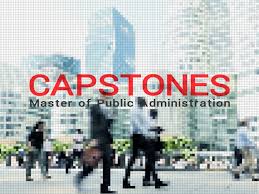 This Michaelmas Term LSE Research Festival ran a series of workshops encouraging researchers to use visual representation to communicate research. Continuing our series of interviews involving the practitioners of these workshops, Susannah Rees, an associate lecturer from University of the Arts London, talks us through her workshop on using graphic design to create posters which successfully communicate social science research.
This Michaelmas Term LSE Research Festival ran a series of workshops encouraging researchers to use visual representation to communicate research. Continuing our series of interviews involving the practitioners of these workshops, Susannah Rees, an associate lecturer from University of the Arts London, talks us through her workshop on using graphic design to create posters which successfully communicate social science research.
What do you think is unique about using poster design to communicate social science research?
A simple, well designed poster allows the researcher to communicate the essence of their work quickly, clearly and succinctly. An effective poster will encourage further interest in the subject area and allow the researcher a good starting point for further discussion with the audience.
A good combination of text and image can be an incredibly powerful way of getting the basics of a project across. The poster is a great format as it is simple to reproduce, it is versatile and can be used virtually anywhere and it requires no technology to view.
What are your main dos and don’ts for researchers attempting to use posters in their research?
It’s a good idea to become visually aware of the posters that you see on a daily basis – which ones attract you? What do you notice about those posters? Typically the most eye catching examples have a large image and a brief heading to pull the viewer in and then smaller text and images to give more information once the audience has been ‘seduced’. The least successful social science posters look like enlarged spreads from a text book – too busy, too full of information and too confusing.
- Be prepared to edit your work harshly.
- Only use high quality images – pixelated photos (often taken from websites) only serve to make your poster look unappealing and unprofessional.
- Be brave and cut that text back! Focusing on the key points is absolutely essential to a successful social science poster, as are design basics such as limiting the amount of typefaces and point sizes, choosing a dedicated palette of colours to work with and establishing a simple grid system to give a sense of calm control.
How do you think researchers can benefit from taking part in poster exhibitions such as LSE Research Festival?
 I show many examples of posters from diverse areas that I admire for different reasons in my workshop presentation. Social science poster design has very specific requirements and hopefully as social science researchers become more aware of the value of good design and good visual communication in the dissemination of their work, this genre of poster design will develop even further. The opportunity to produce a poster for the Research Festival is an ideal opportunity for students to explore the possibilities of visual communication and to become more adept at attracting new audiences through good, clear design techniques.
I show many examples of posters from diverse areas that I admire for different reasons in my workshop presentation. Social science poster design has very specific requirements and hopefully as social science researchers become more aware of the value of good design and good visual communication in the dissemination of their work, this genre of poster design will develop even further. The opportunity to produce a poster for the Research Festival is an ideal opportunity for students to explore the possibilities of visual communication and to become more adept at attracting new audiences through good, clear design techniques.
If you’d like to stay in touch with news and information about LSE Research Festival 2015 please subscribe to this blog and follow us on Twitter @LSEResearchFest.





